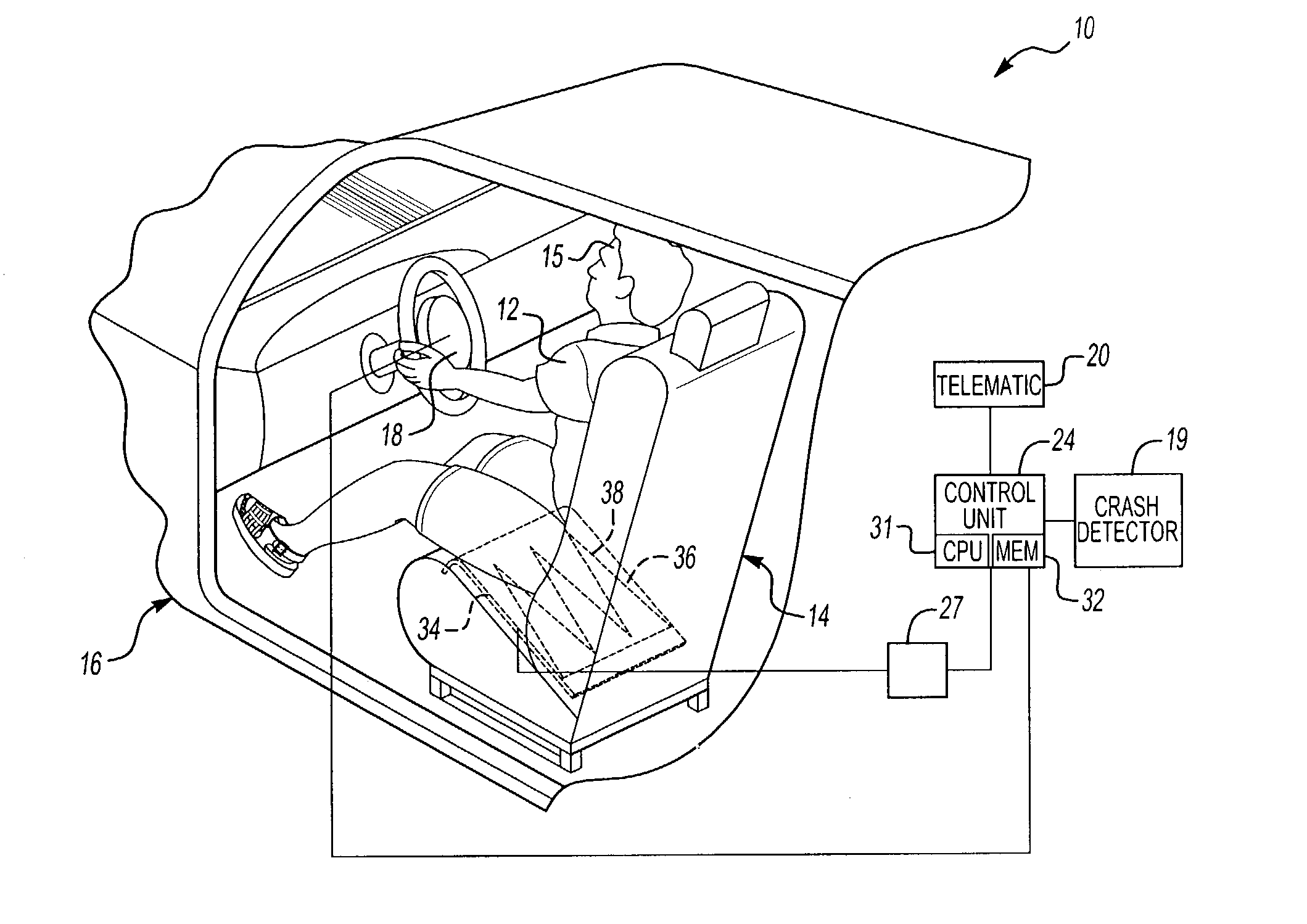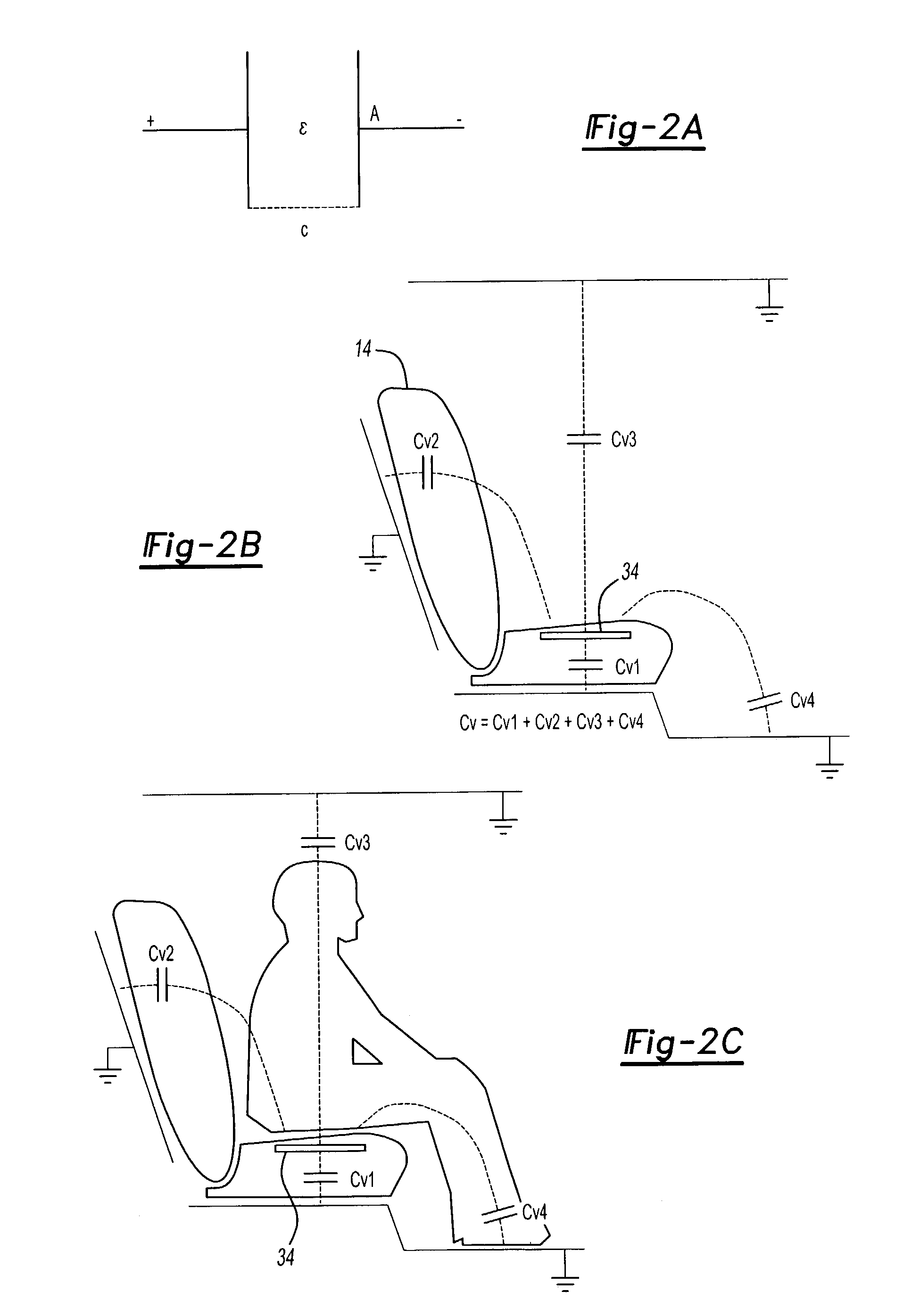Occupant presence detection device
a detection device and occupant technology, applied in the field of safety systems, can solve the problems of complex circuitry, high cost and complexity of these devices, and require precision components, and achieve the effect of high precision components
- Summary
- Abstract
- Description
- Claims
- Application Information
AI Technical Summary
Benefits of technology
Problems solved by technology
Method used
Image
Examples
second embodiment
[0036]In the invention, shown in FIG. 5, a fault detection circuit 60 is incorporated to detect the most common failure modes of a capacitance based system. These include; failure of the oscillator 50 disconnected or damaged electrode 34, and the electrode 34 being shorted to the grounded vehicle chassis. This allows for the device reading the occupant presence detection device to take alternative actions in the event of a failure. This device utilizes the electrode 34 shown in FIG. 1.
[0037]The fault detection circuit 60 is divided into two independent modules; an oscillator failure detection module 62 and a damaged / grounded electrode detection module 64. The output of the oscillator 50 is coupled to an AC-DC converter 66 via the capacitor C which only allows an alternating signal to pass. Regardless of the voltage at which the oscillator 50 fails, the signal will not be passed to the AC-DC converter 66 once there is no oscillation. This will cause the DC signal to fall below a pred...
third embodiment
[0040]In the invention, shown in FIGS. 6a and 6b, a second capacitive sensor 80, configured to detect pressure, is used in conjunction with the original electrode in order to detect the presence of a child-seat. FIG. 6a shows the TOP and SIDE view of the sensor. It consists of a basic occupant sensing electrode 34 (as described above) working in conjunction with the pressure-sensing capacitive sensor 80. The capacitive sensor 80 comprises a sensing electrode 82, a grounded plate 84 and a compressible material 86.
[0041]As mentioned previously, a decrease in the distance between the electrodes 82, 84 causes an increase in capacitance. Therefore, the weight of a body, or of a child seat will cause the distance between the sensing electrode 82 and grounded electrode 84 to decrease, causing an increase in capacitance. This will be detected by the second detection circuit 90 as shown in FIG. 6b.
[0042]The second detection circuit 90 is identical to the first, only it is configured to dete...
PUM
 Login to View More
Login to View More Abstract
Description
Claims
Application Information
 Login to View More
Login to View More - R&D
- Intellectual Property
- Life Sciences
- Materials
- Tech Scout
- Unparalleled Data Quality
- Higher Quality Content
- 60% Fewer Hallucinations
Browse by: Latest US Patents, China's latest patents, Technical Efficacy Thesaurus, Application Domain, Technology Topic, Popular Technical Reports.
© 2025 PatSnap. All rights reserved.Legal|Privacy policy|Modern Slavery Act Transparency Statement|Sitemap|About US| Contact US: help@patsnap.com



